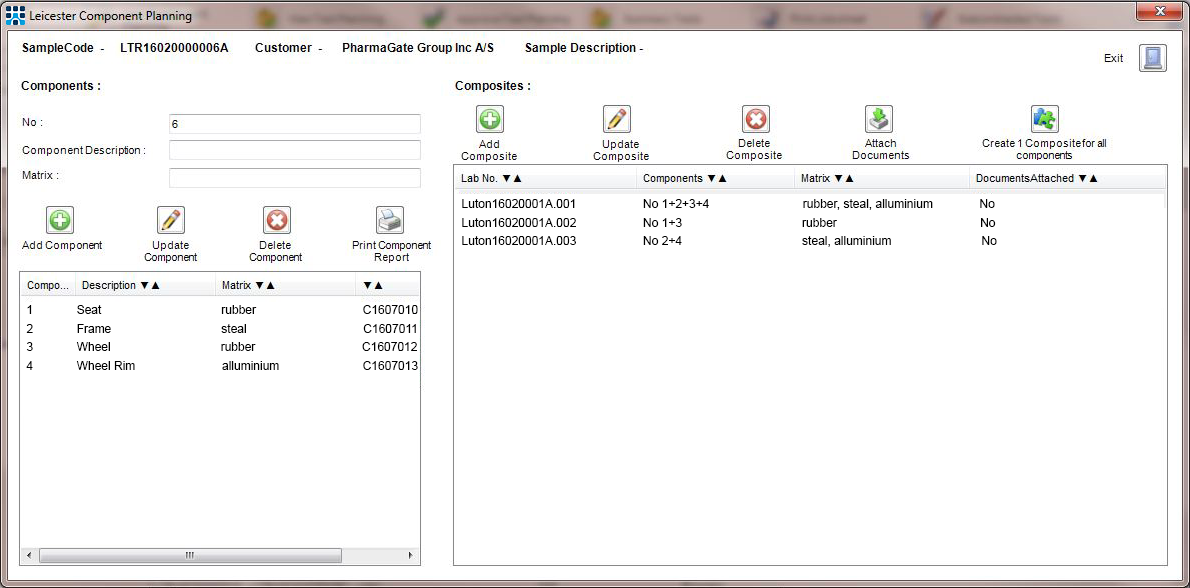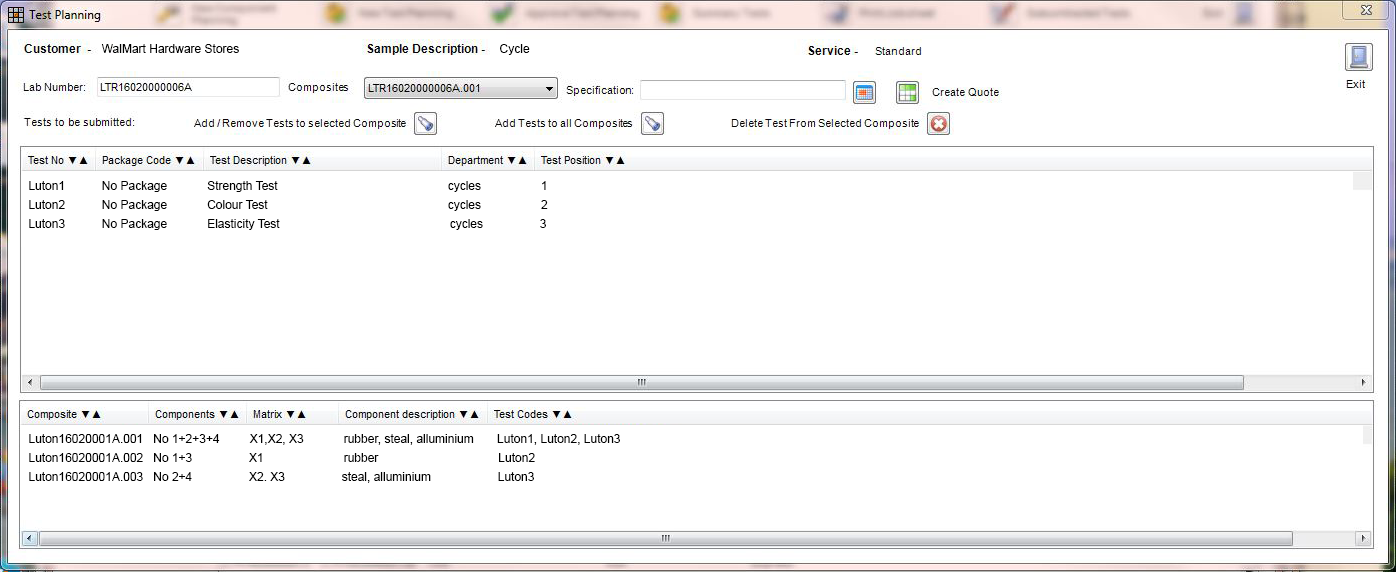Blog: Applications
Saving Time with Composite Testing
29th February 2024

‘Composite testing’ is an important part of laboratory product testing to ensure that a product is fit for purpose. Composite testing involves testing groups of the component parts of a product together rather than all of the components individually and can save significant amounts of time and money, since if the composite group passes a given test there is no need to repeat the test for the individual components.
Fig 1: Grouping individual product components for composite testing
Since most products have a number of component parts, the challenge for a laboratory information management system (LIMS) is to make sure that the appropriate component sample combinations have the required tests allocated to them and the management of the resultant test data. Autoscribe Informatics’ ‘Composite Testing’ module for the Matrix Gemini LIMS has been designed to make this process straightforward, by making use of the ‘parent/child’ hierarchy structure available within Matrix Gemini.
Composite testing can be used in any product development or quality control process, but is particularly important for contract testing laboratories that are likely to carry out a wide range of tests on a diverse range of products from many different industries. For these types of laboratories in particular, there are additional benefits from using the composite testing module, since parameters such as the time required to perform an individual test and the cost associated with each test can be stored as part of the test details, allowing the turnaround time and overall cost for a given composite testing protocol to be generated automatically. There is also provision for links into a pricing module for the LIMS which would allow any discounts offered to specific customers to be applied to allow a final quotation to be generated.
Practical considerations
Taking the clothing industry as just one example, a typical garment may be made from a variety of materials. It will have seams and different fixing mechanisms such as buttons and zips. It could be subjected to a huge number of tests. Physical tests could include testing for seam efficiency, the force needed to tear or puncture the fabric and button durability. Typically composite testing could be used for testing different component combinations for colour-fastness, dye toxicity, flammability and fading as a result of exposure to light.
Example 2: Example assigning relevant tests to each component group
The new module for the Matrix Gemini LIMS provides a robust and configurable approach to data management for composite testing. Details of each component part for the product, including pictures, can be entered into Matrix Gemini, and linked to the top level product in a parent/child relationship. The required components to be tested can then be selected from a drop down list. The image displayed for each sample helps confirm that it is the correct component part. The required test or set of tests are then selected and allocated to this component list. Once the tests have been carried out, the results can be entered to allow the overall outcome of this testing protocol to be easily evaluated.
This is another perfect example of how the extraordinarily flexible configuration tools provided with Matrix Gemini have allowed the construction of a module that meets a very specific customer need without requiring any additional coding. Find out about how Autoscribe Informatics could help your lab by calling the experts on +44 118 984 0610.

